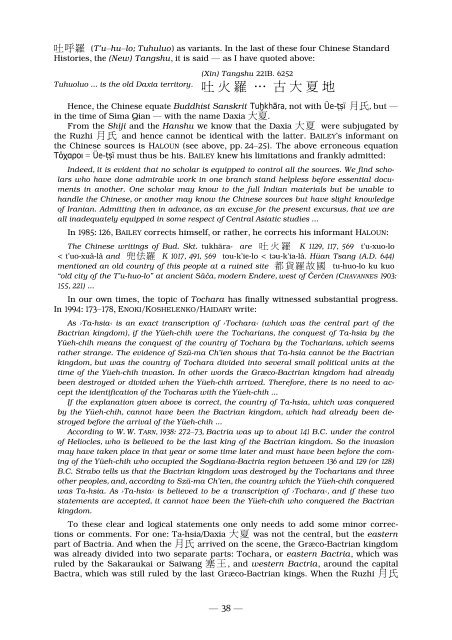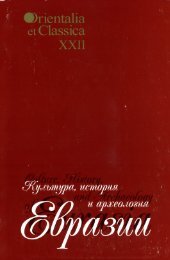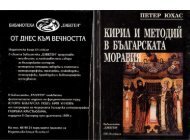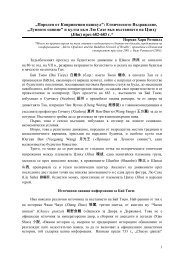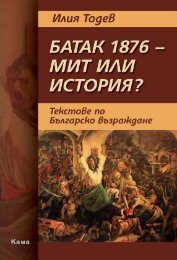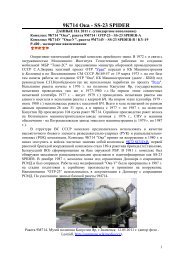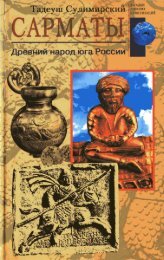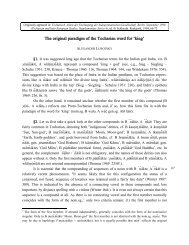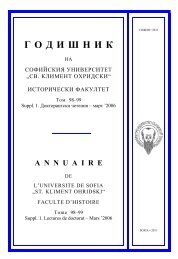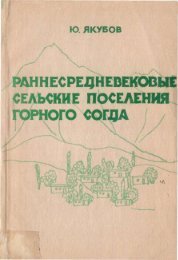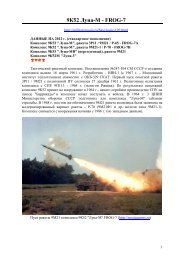You also want an ePaper? Increase the reach of your titles
YUMPU automatically turns print PDFs into web optimized ePapers that Google loves.
吐呼 羅 (T’u–hu–lo; Tuhuluo) as variants. In the last of these four Chinese Standard<br />
Histories,<br />
the (New) Tangshu, it is said — as I have quoted above:<br />
Tuh<br />
(Xin) Tangshu 221B. 6252<br />
uoluo ... is the old Daxia territory. 吐 火 羅 … 古 大 夏 地<br />
Hence, the Chinese equate Buddhist Sanskrit Tuḫkhāra, not with Üe-ṭṣï 月氏, but —<br />
in<br />
the time of Sima Qian — with the name Daxia 大夏.<br />
From the Shiji and the Hanshu we know that the Daxia 大夏 were subjugated by<br />
the Ruzhi 月氏 and hence cannot be identical with the latter. BAILEY’s informant on<br />
the Chinese sources is HALOUN (see above,<br />
pp. 24–25). The above erroneous equation<br />
Τόχαροι<br />
= Üe-ṭṣï must thus be his. BAILEY knew his limitations and frankly admitted:<br />
Indeed, it is evident that no scholar is equipped to control all the sources. We find scholars<br />
who have done admirable work in one branch stand helpless before essential documents<br />
in another. One scholar may know to the full Indian materials but be unable to<br />
handle the Chinese, or another may know the Chinese sources but have slight knowledge<br />
of Iranian.<br />
Admitting then in advance, as an excuse for the present excursus, that we are<br />
all<br />
inadequately equipped in some respect of Central Asiatic studies ...<br />
In 1985: 126, BAILEY corrects himself, or rather, he corrects his informant HALOUN:<br />
The Chinese writings of Bud. Skt. tukhåra- are 吐火羅 K 1129, 117, 569 t’u-xuo-lo<br />
< t’uo-xuâ-lâ<br />
and 兜佉羅 K 1017, 491, 569 tou-k’ie-lo < tÿu-k’ia-lâ. Hüan Tsang (A.D. 644)<br />
mentioned an old country of this people at a ruined site 都貨羅故國 tu-huo-lo ku kuo<br />
“old city of the T’u-huo-lo” at ancient Så¾a, modern Endere, west of ²er¾en (CHAVANNES 1903:<br />
155, 221) ...<br />
In our own times, the topic of Tochara has finally witnessed substantial progress.<br />
In<br />
1994: 173–178, ENOKI / KOSHELENKO / HAIDARY write:<br />
As ›Ta-hsia‹ is an exact transcription of ›Tochara‹ (which was the central part of the<br />
Bactrian kingdom), if the Yüeh-chih were the Tocharians, the<br />
conquest of Ta-hsia by the<br />
Yüeh-chih<br />
means the conquest of the country of Tochara by the Tocharians, which seems<br />
rather strange. The evidence of Sz°-ma Ch’ien shows that Ta-hsia cannot be the Bactrian<br />
kingdom, but was the country of Tochara divided into several small political units at the<br />
time of the Yüeh-chih invasion. In other words the Græco-Bactrian kingdom had already<br />
been destroyed or divided when<br />
the Yüeh-chih arrived. Therefore, there is no need to accept<br />
the identification of the Tocharas with the Yüeh-chih ...<br />
If the explanation given above is correct, the country of Ta-hsia, which was conquered<br />
by the Yüeh-chih, cannot have been the Bactrian kingdom, which had already been destroyed<br />
before the arrival of the Yüeh-chih ...<br />
According to W. W. TARN, 1938: 272–73, Bactria<br />
was up to about 141 B.C. under the control<br />
of Heliocles, who is believed to be the last king<br />
of the Bactr ian kingdom. S o the invasion may<br />
have taken place in that year or some time later and must have been before the coming<br />
of the Yüeh-chih who occupied the Sogdiana-Bactria region between 136 and 129 (or 128)<br />
B.C. Strabo tells us that the Bactrian kingdom was destroyed by the Tocharians and three<br />
other peoples, and, according to Sz°-ma Ch’ien, the country which the Yüeh-chih conquered<br />
was<br />
Ta-hsia. As ›Ta-hsia‹ is believed to be a transcription of ›Tochara‹, and if these two<br />
statements are accepted, it cannot have been the Yüeh-chih<br />
who conquered the Bactrian<br />
kingdom.<br />
To these clear and logical statements one only needs to add some minor corrections<br />
or comments. For<br />
one: Ta-hsia/Daxia 大夏 was not the central, but the eastern<br />
part of Bactria. And when the 月氏 arrived on the scene, the Græco-Bactrian<br />
kingdom<br />
was already divided into two separate parts: Tochara, or eastern Bactria, which was<br />
ruled by the Sakaraukai or Saiwang<br />
塞王, and western Bactria, around the capital<br />
Bactra, which was still ruled by the last<br />
Græco-Bactrian kings. When the Ruzhi 月氏<br />
— 38 —


